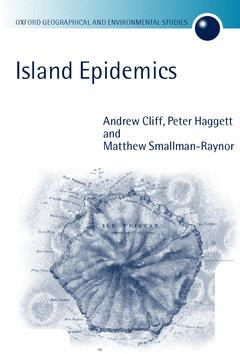Island Epidemics Oxford Geographical and Environmental Studies Series
Langue : Anglais
Auteurs : Cliff Andrew, Haggett Peter, Smallman-Raynor Matthew

Ever since Charles Darwin landed on the Galápagos islands in September 1835, small islands have had a special place in scientific history. In Island epidemics, the authors show that the complex warfare of invasion and extinction observed by Darwin for plants and animals applies today with equal force to the micro-organisms which lie behind many human diseases. Growing from their earlier studies of Iceland and the Fijian islands, they provide a broad world picture of diseases which range from the familiar (influenza and German measles) to the exotic (kuru and tsutsugamushi), and islands which range in remoteness from the nearby Faroes and Scillies to the inaccessible Tristan da Cunha and Easter island. A constant theme in the book is the way in which technical developments over the last 150 years, notably in vaccination and transport, are fundamentally affecting the ways in which waves of epidemic diseases circle around the globe. As Darwin argued, islands form natural laboratories in which processes can be observed which are too complex to track in the fast-interacting city worlds, which dominate the crowded continents. The arrival of Ross River virus in the Cook islands or the decline of motor-neurone diseases on Guam can be followed with a precision, which owes much to an islands small size and limited accessibility. The revolution in molecular biology at the end of this century is emphasising how an islands genome, with peoples less mixed than in mainland communities, can provide unique genetic insights into diseases and heredity; the book reports on several examples including the interest in Icelands DNA bank.
Andrew Cliff, Professor of Theoretical Geography, University of Cambridge and Fellow of Christ's College. Peter Haggett, Emeritus Professor of Urban and Regional Geography, University of Bristol Matthew Smallman-Raynor, Lecturer in Geography, University of Nottingham
Date de parution : 04-2000
Ouvrage de 586 p.
16.4x24.2 cm
© 2024 LAVOISIER S.A.S.


